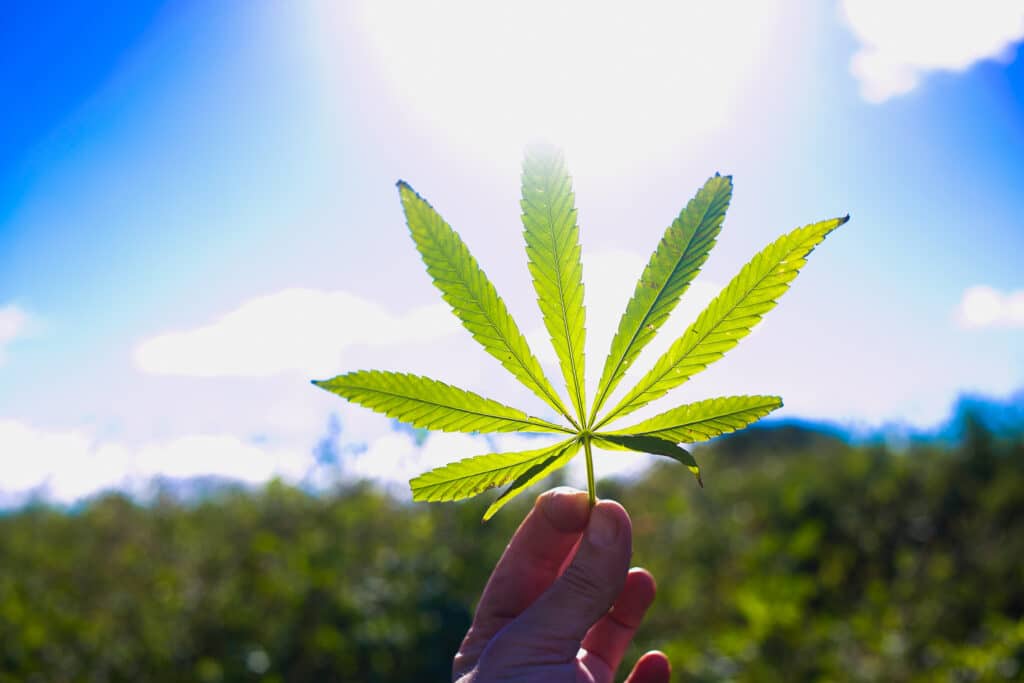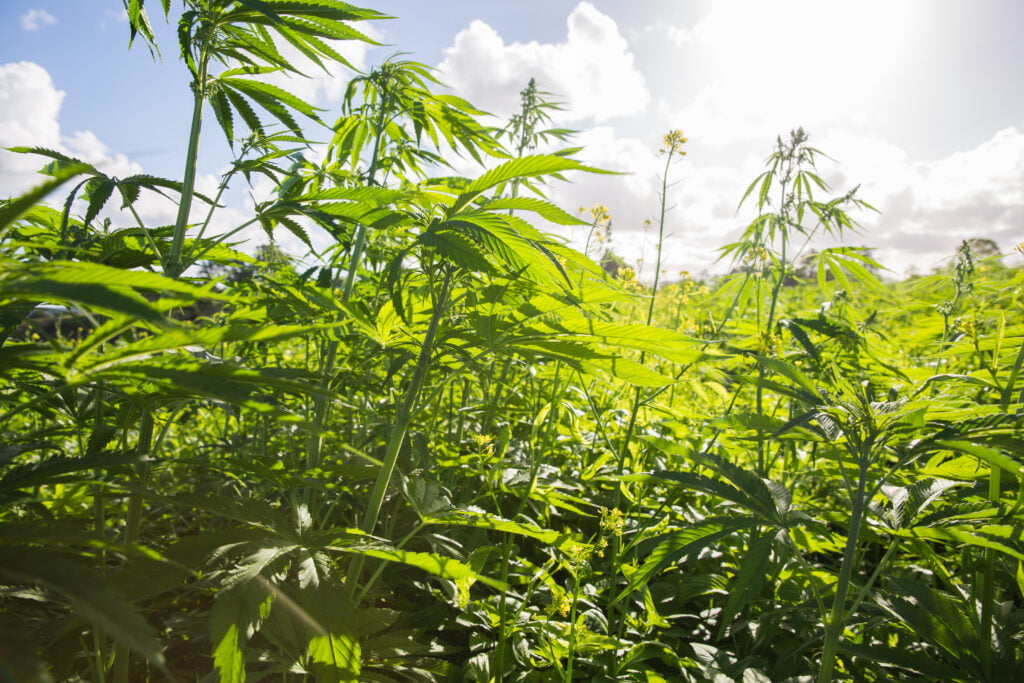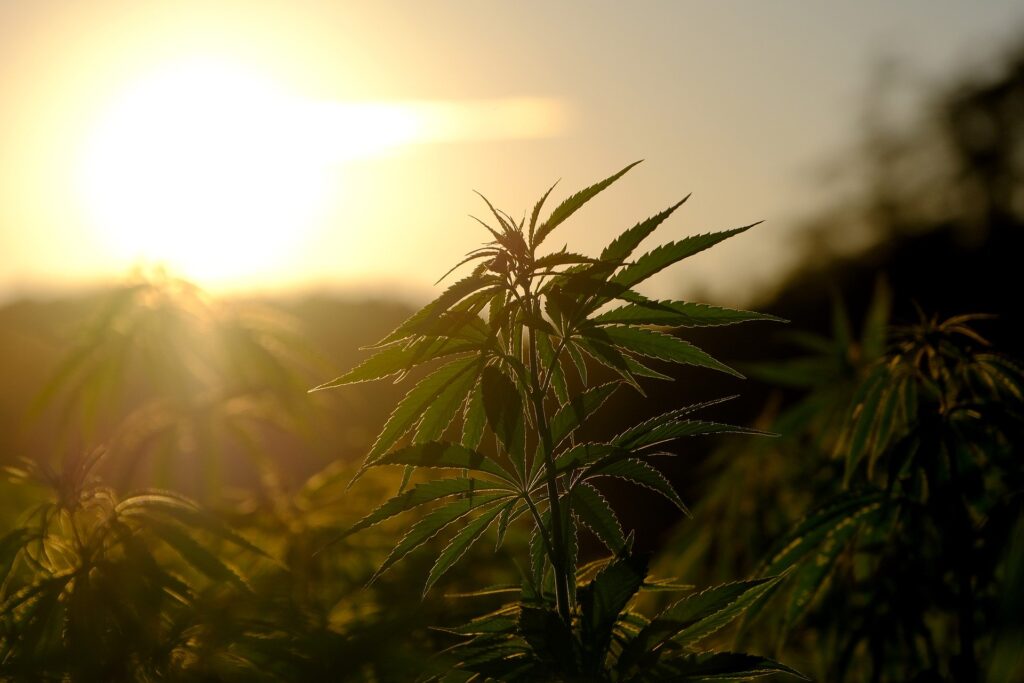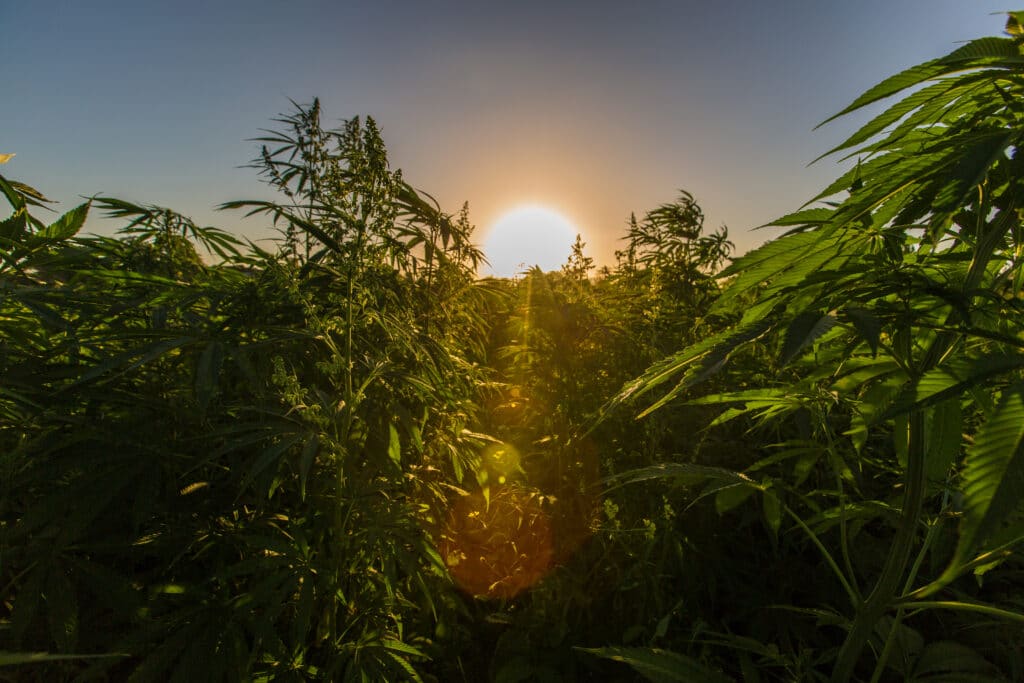Hemp and Climate Change: Is It The Answer To Our Current Crisis?

The climate crisis has been the centre of debate for decades. But as the years tick over, the arguments only seem to get more heated, with very few solutions to show for it.
But recently, the Australian government has confirmed it will attend the COP26 Glasgow Summit, while also committing to net-zero emissions by 2050.
It’s a start. But there’s one problem with this: how are they going to achieve it?
Well, this is an article about hope. More specifically, hope in the form of the humble hemp plant.
Hemp is a fast-growing, sustainable, nutritious and incredibly useful plant. A solution that appeals to government bodies and climate change advocates alike. And we believe it’s the leg-up we need in our race against climate change.
What Is Hemp?
Hemp is an annual, versatile and fast-growing plant, found in countries all over the world.
Both hemp and marijuana come from a variety of plants called cannabis sativa.
In the past, they’ve been pigeon-holed into the same category, ignoring the fact that they’re largely different in their effects.
So, rather than thinking of hemp and marijuana as identical twins, think of them as brother and sister plants (but the polar opposite kind – you know – with totally different hobbies and interests).
The main difference between the two is the level of THC (the psychoactive compound in cannabis that makes you giggly and munchy). While marijuana can have up to a whopping 25% THC, hemp contains less than 0.3% THC by dry weight – which is not even close to what you’d need to have any psychoactive effects.
And despite what people say, you can tell the difference between the two plants. Hemp is a taller plant with slender leaves, whereas marijuana is bushy with wider leaves.

Uses of Hemp
Here’s something our leaders ought to know: not only is hemp sustainable, it’s also one of the most useful plants in the world.
It’s been used for thousands and thousands of years, dating back to Europe and Ancient China, where they’d use it as textiles, food, rope, pottery and paper.
Today, it can be used in literally thousands of products. We’re talking about food, skincare, beauty, clothing, insulation, building materials, bioplastics, biofuel, soap, carpet, medicine… need we go on?
So If Hemp Is So Good, Why Has It Only Recently Become Legal?
The myths and misinformation surrounding hemp have resulted in a whole lot of confusion. Which is a shame, because it means the development of sustainable hemp products has been set back almost 100 years. But we believe we need to make up for this lost time.
In short, the confusion surrounding hemp began with church-funded propaganda in the US, which painted cannabis as a dangerous plant that would turn your children sex-crazed, violent and insane. Yikes.
Not only that, there was a conflict of interest in the private sector, in a time where cotton, timber and synthetic plastics were emerging. A bunch of big-shot companies saw hemp as a threat, so they jumped on board the propaganda, labelling hemp as a highly addictive substance with no real medicinal value.
With that, America banned hemp in 1937, and then countries all over the world (including Australia) began to follow suit.
It wasn’t until 2017 where Australia saw the light and legalised hemp.

Hemp And Climate Change, How Is Hemp Sustainable?
Hemp is a viable and promising climate change solution that deserves a look in by our world leaders.
First of all, hemp is fast-growing. Like, really, really fast-growing. Hemp grows to maturity within 90 – 120 days, reaching heights of 13 feet (compared to trees, which can take decades to reach maturity).
So, does hemp absorb CO2?
In a word, yes. Industrial hemp CO2 absorption is a whopping 22 tonnes per hectare, which is more than any forest or agricultural crop in the world. Hemp also begins to suck in carbon from the moment it’s seeded. This process of sequestering carbon doesn’t just remove CO2 from the air and help reverse climate change, it also improves soil quality.
Speaking of soil, hemp also has impressively long roots. So unlike many agricultural plants, its root system helps to clean and aerate the soil, as well as prevent erosion.
More than that, carbon stored in vegetation and soil can be quickly released back into the atmosphere when it’s pulled out of the ground. For this reason, this Kyoto Protocol defined permanence criteria, which means carbon sequestration must be maintained. As hemp is an annual plant that can be replanted, it meets these criteria (with flying colours). Not only that, hemp is a beneficial plant for farmers, as they can use it alongside their usual rotation to keep the soil healthy.
Finally, every single part of the hemp plant can be used so there’s minimal waste. The fibre can be transformed into textiles and rope. The hemp hurd (woody core) can be transformed into hempcrete, an eco-friendly building material. And the seeds can be transformed into a nourishing oil that’s rich in Omega fatty acids.
There are tens of thousands of uses for hemp, and we’ve barely scratched the surface.

Hemp And Climate Change In Australia
In 2021, the Australian government announced a net-zero pledge leading up to the COP26 Glasgow Summit. But there’s one problem: they’ve given no real strategy on how they plan to achieve it.
To us, the answer is obvious: hemp farming.
Hemp can be grown on a widespread scale across Australia, with the ability to not only thrive in nutrient-poor soil, but restore it. What’s more, hemp farming can create employment, boost the economy and help Australia reach our climate targets.
It’s not often we stumble upon a solution that has the potential to benefit the government, economy, industry and climate change advocates alike. But hemp is the silver lining. A solution that for once, we can widely agree upon.
So from where we are standing, we should run with this solution. Full pelt.
Who are we?
We are Maxine and Mike Shea, founders of the Hemp Collective. Together, we’re proud to be at the forefront of the hemp industry in Australia, creating luxurious, effective and zero waste hemp products. But our mission goes so much further than our hemp body care and pet care range. We’re dedicated to continuous education and destigmatising hemp – now and into the future.
Resources:
https://hemp-copenhagen.com/images/Hemp-cph-Carbon-sink.pdf
Such great and ingenious natural products that have a wonderful aroma and feel so great to use. Try them and you'll understand what I mean.
- Leon -


